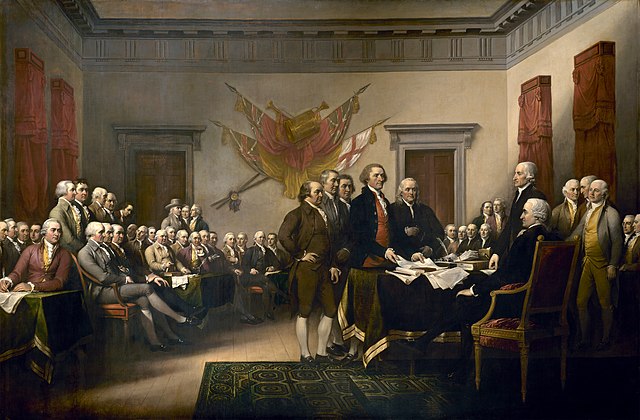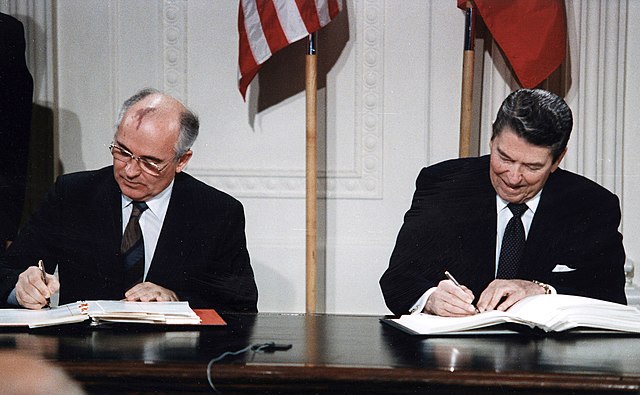The Treaty of Paris, signed in Paris by representatives of King George III of Great Britain and representatives of the United States on September 3, 1783, officially ended the American Revolutionary War and recognized the Thirteen Colonies, which had been part of colonial British America, to be free, sovereign and independent States.
The first page of the Treaty of Paris, signed on September 3, 1783
Treaty of Paris, a 1783 portrait by Benjamin West depicting the American delegation at the Treaty of Paris, including (left to right): John Jay, John Adams, Benjamin Franklin, Henry Laurens, and William Temple Franklin. The British delegation refused to pose, and the portrait was never completed.
A commemorative plaque of the Treaty of Paris on the site where the treaty was signed, 56 Rue Jacob in Paris, on September 3, 1783
The last page of the Treaty of Paris
The United States of America, commonly known as the United States or America, is a country primarily located in North America. It is a federation of 50 states, a federal capital district, and 326 Indian reservations. Outside the union of states, it asserts sovereignty over five major unincorporated island territories and various uninhabited islands. The country has the world's third-largest land area, second-largest exclusive economic zone, and third-largest population, exceeding 334 million.
Cliff Palace, built by Ancestral Puebloans in present-day Montezuma County, Colorado, between c. 1200 and 1275
Declaration of Independence, a portrait by John Trumbull depicting the Committee of Five presenting the draft of the Declaration to the Continental Congress on June 28, 1776, in Philadelphia
Mikhail Gorbachev and Ronald Reagan sign the Intermediate-Range Nuclear Forces Treaty at the White House in 1987.
The Twin Towers in New York City during the September 11 attacks of 2001








